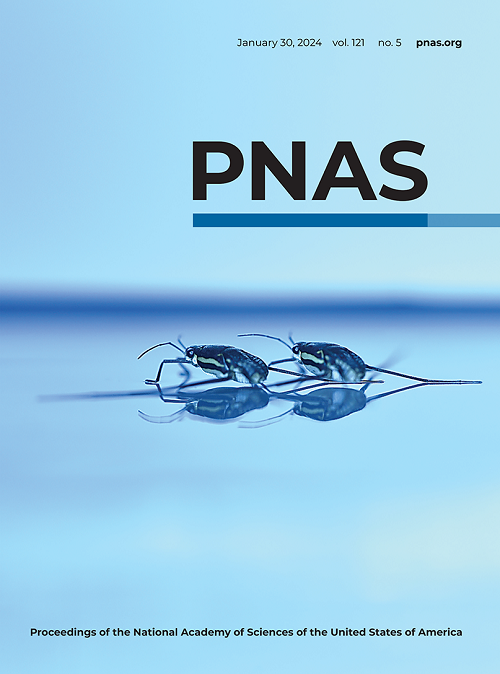温和的质膜染料调色板
IF 9.4
1区 综合性期刊
Q1 MULTIDISCIPLINARY SCIENCES
Proceedings of the National Academy of Sciences of the United States of America
Pub Date : 2025-07-15
DOI:10.1073/pnas.2504879122
引用次数: 0
摘要
质膜(PM)染色是监测膜形态和动力学的重要细胞器标记。最先进的PM染色是明亮的,特异的,荧光的,并与超分辨率成像兼容。然而,当使用先进的荧光显微镜记录膜动力学时,由于其磷脂双层性质,PM容易受到染料引入的光动力损伤。在这里,我们介绍了为延时荧光成像量身定制的PK Mem染料。通过将三态猝灭剂整合到具有花青素发色团和两亲性两性离子锚定的MemBright染料中,PK Mem染料在成像实验中显示,与MemBright原型相比,光毒性降低了三倍,光稳定性提高了四倍以上。这些染料能够对活的或固定的癌细胞系和大范围的原代细胞进行二维和三维成像,同时与各种荧光标记物很好地配对。PK - Mem染料可用于脑切片神经元成像和活体双光子成像。PK Mem调色板的温和性质使细胞迁移,心肌细胞跳动,精子发生和轴突生长锥体动力学的超长期记录成为可能,这是使用传统PM染料的令人望而生畏的挑战。值得注意的是,PK Mem染料与STED/SIM成像光学兼容,可以方便地将生长锥跟踪和线粒体运输等延时神经元成像常规升级到纳米级分辨率。本文章由计算机程序翻译,如有差异,请以英文原文为准。
A gentle palette of plasma membrane dyes
Plasma membrane (PM) stains are important organelle markers for monitoring membrane morphology and dynamics. The state-of-the-art PM stains are bright, specific, fluorogenic, and compatible with superresolution imaging. However, when recording membrane dynamics using advanced fluorescence microscopes, PM is prone to photodynamic damage introduced by dyes due to its phospholipid bilayer nature. Here, we introduce PK Mem dyes tailored for time-lapse fluorescence imaging. By integrating triplet-state quenchers into the MemBright dyes featuring cyanine chromophores and amphiphilic zwitterion anchors, PK Mem dyes exhibited a three-fold reduction in phototoxicity and a more than four-fold improvement in photostability in imaging experiments compared to MemBright prototypes. These dyes enable 2D and 3D imaging of live or fixed cancer cell lines and a wide range of primary cells, at the same time pair well with various fluorescent markers. PK Mem dyes can be applied to neuronal imaging in brain slices and in vivo two-photon imaging. The gentle nature of PK Mem palette enables ultralong-term recording of cell migration, cardiomyocyte beating, spermiogenesis, and axonal growth cone dynamics, which are prohibitively challenging using traditional PM dyes. Notably, PK Mem dyes are optically compatible with STED/SIM imaging, which can handily upgrade the routine of time-lapse neuronal imaging, such as growth cone tracking and mitochondrial transportations, into nanoscopic resolutions.
求助全文
通过发布文献求助,成功后即可免费获取论文全文。
去求助
来源期刊
CiteScore
19.00
自引率
0.90%
发文量
3575
审稿时长
2.5 months
期刊介绍:
The Proceedings of the National Academy of Sciences (PNAS), a peer-reviewed journal of the National Academy of Sciences (NAS), serves as an authoritative source for high-impact, original research across the biological, physical, and social sciences. With a global scope, the journal welcomes submissions from researchers worldwide, making it an inclusive platform for advancing scientific knowledge.

 求助内容:
求助内容: 应助结果提醒方式:
应助结果提醒方式:


